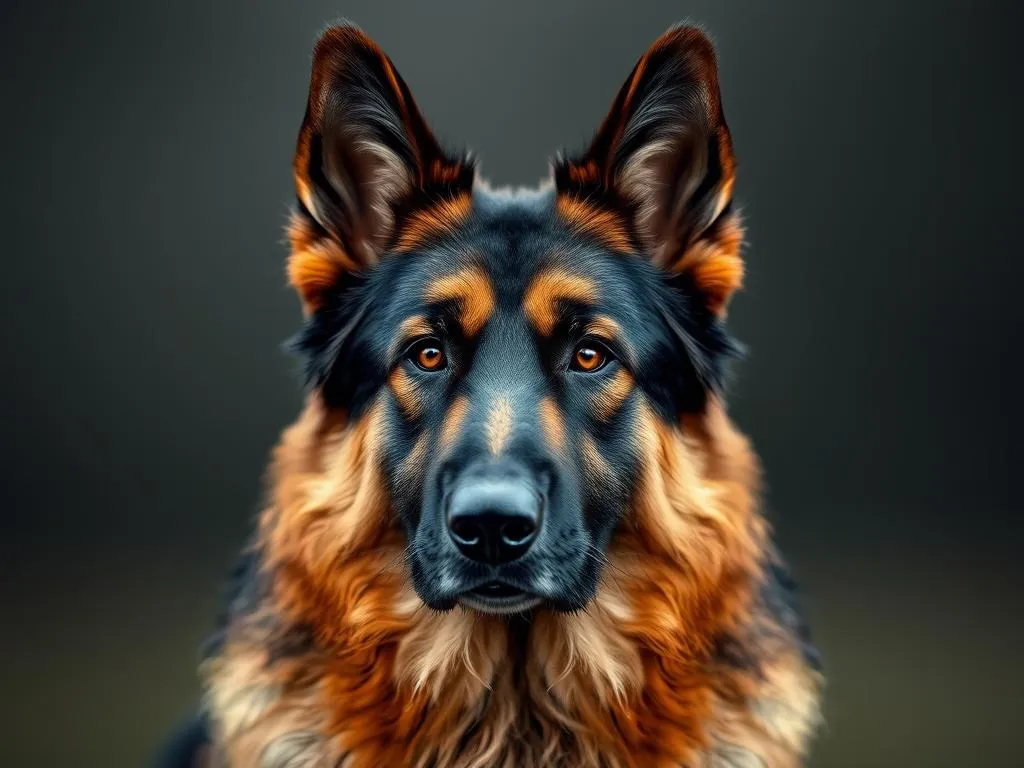
Introduction
The world of dog breeds is incredibly diverse, showcasing a wide array of physical traits, temperaments, and purposes. Each breed carries unique characteristics that can significantly influence the choice of a pet for prospective owners. Among these breeds, the Blue German Shepherd stands out as a captivating variant of the traditional German Shepherd, known for its striking coat color and exceptional qualities.
The Blue German Shepherd is a remarkable example of how genetics can create unique variations within a breed. While it shares many traits with the standard German Shepherd, its distinctive blue coat sets it apart, making it a favorite among dog enthusiasts.
Understanding the German Shepherd Breed
History and Origin
The German Shepherd breed originated in Germany in the late 19th century. Originally developed for herding and protecting sheep, the breed was standardized by Max von Stephanitz, who founded the Verein für Deutsche Schäferhunde (Society for the German Shepherd Dog) in 1899. The breed gained rapid popularity due to its intelligence, versatility, and loyalty, leading to its recognition by various kennel clubs worldwide.
Over the decades, the German Shepherd has transitioned from a working dog to a cherished family pet, known for its roles in police, military, and service work. This breed’s rich history is integral to understanding its nature and the characteristics that make it so beloved.
Standard Characteristics
The German Shepherd is characterized by its strong, muscular build, typically standing between 22 to 26 inches tall and weighing between 50 to 90 pounds. The breed’s coat is double-layered, offering protection against various weather conditions, and it comes in several colors, including black and tan, sable, and solid black.
In terms of temperament, German Shepherds are known for their intelligence, loyalty, and courageous nature. They are highly trainable and are often described as confident, alert, and protective of their families. These traits make them excellent companions, working dogs, and guardians.
The Blue German Shepherd Explained
What Makes the Blue German Shepherd Unique?
The Blue German Shepherd is distinguished by its unique blue coat, which results from a recessive gene affecting the pigmentation of the fur. This coloration adds an extra layer of appeal for those looking for a visually striking dog. While the blue coat may appear to be a solid color, it often has variations and shades, giving it a beautiful depth.
When compared to standard German Shepherd colors, the blue coat is less common, making it a sought-after variant among dog lovers. However, it is essential to note that the blue coat does not alter the breed’s inherent characteristics, such as intelligence, loyalty, and protective nature.
Rarity and Popularity
The Blue German Shepherd is relatively rare compared to its more traditional counterparts. This rarity contributes to its allure, as potential owners often seek out unique and striking appearances. The popularity of the blue variant has been fueled by social media and various dog shows, where these dogs often draw attention due to their stunning looks.
However, while the blue coat may be appealing, it is vital for prospective owners to consider the overall health and temperament of the dog rather than solely focusing on its color. Responsible breeding practices are crucial to ensure that these dogs retain the qualities that make German Shepherds exceptional companions.
Health Considerations
Common Health Issues
German Shepherds, including the Blue German Shepherd, are prone to certain health issues. Some of the most common concerns include hip and elbow dysplasia, degenerative myelopathy, and various skin conditions. These issues can arise from genetic predispositions, so it is essential for potential owners to be aware of these risks.
Specific to the blue variant, the coat color does not inherently cause unique health problems, but some breeders may prioritize appearance over health, leading to increased risks for genetic disorders. Therefore, it is essential to choose reputable breeders who prioritize the health of their dogs.
Health Screening and Prevention
To maintain the health of a Blue German Shepherd, regular veterinary check-ups and health screenings are crucial. Common recommendations include hip and elbow evaluations and eye examinations. Moreover, potential owners should inquire about the genetic testing of the breeding dogs to ensure they are free from hereditary health issues.
Responsible breeding practices play a significant role in preventing health problems. It is advisable to seek breeders who adhere to ethical standards and prioritize the health and well-being of their dogs over aesthetics.
Training and Socialization
Importance of Early Training
Training is vital for any dog, particularly for a highly intelligent breed like the German Shepherd. Early training helps to establish boundaries and encourages good behavior. Starting training at a young age can lead to a well-adjusted adult dog who is obedient and confident.
Positive reinforcement techniques, such as treats and praise, are effective in training German Shepherds. These dogs respond well to structured training sessions, which can include basic commands, advanced obedience, and even agility training.
Socialization Tips
Socialization is equally crucial for a Blue German Shepherd. Exposing the dog to various environments, people, and other animals can help prevent behavioral issues and promote a well-rounded personality. Activities like puppy classes, dog parks, and regular outings can facilitate this process.
It is essential to ensure that socialization is a positive experience. Gradually introducing new stimuli and rewarding calm behavior can help the dog develop confidence and adaptability.
Exercise and Activity Needs
Daily Exercise Requirements
The Blue German Shepherd is an active breed that requires ample exercise to stay healthy and happy. Daily exercise routines should include a mix of physical activities, such as long walks, runs, and play sessions. A minimum of 60 to 90 minutes of exercise each day is recommended to meet their energy needs.
Engaging in activities like fetch, hiking, or swimming can provide both physical and mental stimulation. These dogs thrive with structured activities, and incorporating variety into their exercise routine can prevent boredom and destructive behavior.
Mental Stimulation
As one of the most intelligent dog breeds, German Shepherds require mental challenges in addition to physical exercise. Activities that stimulate their minds, such as puzzle toys, training exercises, and scent work, can keep them engaged and prevent behavioral issues stemming from boredom.
Regular training sessions that challenge their problem-solving abilities can be beneficial, as well as engaging them in interactive games that require them to think and respond to commands.
Grooming and Care
Grooming Needs
Maintaining the coat of a Blue German Shepherd requires regular grooming to keep it healthy and free of matting. While the blue coat does not demand specific grooming techniques, following a standard grooming routine for German Shepherds is essential.
Brushing several times a week is recommended to control shedding and keep the coat in good condition. Regular baths should be conducted as needed, using high-quality dog shampoo to preserve the coat’s natural oils. Additionally, routine checks of the ears, teeth, and nails are vital for overall health.
Nutrition and Diet
A well-balanced diet is crucial for the health of a Blue German Shepherd. High-quality dog food formulated for large breeds is essential to support their growth and development. It is important to consider the dog’s age, weight, and activity level when selecting food.
Feeding schedules should include two meals per day, with portion sizes tailored to the dog’s nutritional needs. Fresh water should always be available, and treats should be given in moderation to prevent obesity.
Living with a Blue German Shepherd
Compatibility with Families and Other Pets
The Blue German Shepherd is known for its loyalty and protective instincts, making it an excellent family companion. They typically get along well with children and can be very affectionate and playful. However, early socialization is key to ensuring good behavior around kids and other pets.
While they are generally friendly, their protective nature means they may be cautious around strangers. Proper training and socialization can help mitigate any overly protective tendencies, allowing for a well-adjusted family pet.
Ideal Living Conditions
A Blue German Shepherd thrives in an environment where it has plenty of space to exercise and play. While they can adapt to apartment living, access to outdoor spaces is beneficial. A securely fenced yard is ideal for providing the dog with a safe area to run and explore.
Mental stimulation and companionship are also important. These dogs are social by nature and can suffer from separation anxiety if left alone for extended periods. Engaging them with toys and interactive activities can help alleviate boredom and anxiety.
Conclusion
In summary, the Blue German Shepherd is a unique and captivating variant of the beloved German Shepherd breed. With its distinctive coat and remarkable qualities, it offers a blend of loyalty, intelligence, and protective instincts that make it a fantastic companion.
As with any breed, potential owners should consider their lifestyle and the specific needs of the dog. Understanding the traits and requirements of the Blue German Shepherd can lead to a fulfilling and harmonious relationship between owner and pet.









